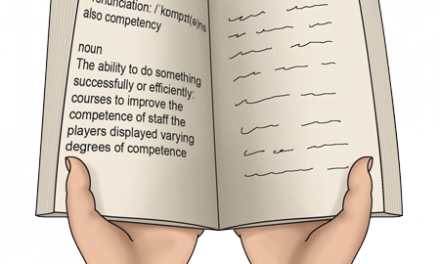PE Office has spoken of assessment without levels before, if we rewind to April 2014 we stated that ‘we all have to accept that level descriptors are no more and embrace the new challenge of assessment without levels…Embrace the new curriculum, because any short term pain from adapting to the new system will result in long term gain. I believe that change may prove to be a good thing for PE, provided we get it right.’
Who is yet to embrace?
I have attended several conferences and spoken to teachers and taken countless phone calls from teachers who have enquired regarding the assessment without levels package with PE Office’s sister company EDLounge. What I have found is that currently there are many schools looking for someone to tell them what the ‘right way’ is and simply there is no one right way.
Other schools have a range of brilliant ideas for assessment and where they want their department to go with the new National Curriculum. These teachers have ideas on how they could assess, track and monitor their students’ progress, but are struggling to see how they could implement this into the school for staff to embrace it properly. There are even a few pioneers whom have the IT skills and developed their own way of assessing and then tracking pupils’ progress.
For me, the purpose of this article is to attempt to help schools gain further understanding of assessment without levels and the new Physical Education programmes of study within the National Curriculum. However, I also hope this article receives some comments that will provoke some further discussion on these topics and we can find out what schools are doing to tackle the issue of implementing their assessment.
The curriculum for PE and assessment without levels
In order to improve understanding of the National Curriculum and assessment without levels, the DfE have provided a series of interviews.
One interviewee, Tim Oats, the group director of assessment research and development at Cambridge Assessment, was chair of the expert panel that informed the review of the National Curriculum.
During the review of the curriculum they looked at areas around the world whose performance was high, they found that in the nations that improved quickly particularly at a primary school level ‘studied fewer things at greater depth’, the students in these areas ‘really mastered fundamental concepts’.
This may start to explain why the programmes of study for PE have slimmed down a lot. Another key point identified with the review of the curriculum was pace, in this National Curriculum the purpose was to help children to study at the right pace through these fundamental concepts, as opposed to racing student through levels at undue pace, it’s at this point we can start to see why there was need to change from levels.
Originally, back when levels were introduced, the idea was that teachers could show progress up through the levels. Eileen Marchant, former chair of the Association for Physical Education, stated that the levels were never used as they were meant to be and ‘physical Education should have never had levels’ they were just introduced to PE to bring it in line with other subjects.
Hargreaves (2013) identified you couldn’t actually tell what a pupil could do or what they understood if they were labelled as a level 3, 4, or 5; a single number covered such a range of attainment, students in the same level could have entirely different knowledge and understanding.
It is vital to be able to identify or assess what students can perform, what they understand (when to play a particular ball, in a particular way for a specific reason) and then see how they progress their body of knowledge through to the end of a lesson, SOW, term, year or Key Stage.
This is why the National Curriculum has developed an overview of aims to attract teachers towards using their professional judgement when choosing; what they are going to teach and how they are going to assess students. I have heard a lot of assessment models, from teachers, that are a developed scheme of work full of mastery statements and the teacher decides using their professional judgement is this student developing, secured or exceeding (or some form of system like this).
The word ‘assessment’ doesn’t necessarily mean a theory or practical exam, it could be ‘enabling teachers to select questions that they can put to children to see if they have really understood,’ in real time, what it is they have done and why they have done it. I personally believe that it’s this real time assessment when teaching that will allow a practitioner to gauge the progress of students.
As Tim Oates states ‘What we need is clear progressive statements’ that work with the national curriculum ‘those statements focusing on key ideas and concepts’ and the assessment being focused on these; ‘has a child grasped these in sufficient depth and with security’.
Sue Wilkinson, the strategic lead for the Association for Physical Education, stated that the reason for the minimalist curriculum is for PE teachers to ‘build on a bespoke curriculum for the needs of their young people and their school’. In line with this, Eileen Marchant, former chair of the Association for Physical Education, stated that this new curriculum has been given back to the professionals, the PE teachers, so now you can teach to the children and not teach to the levels of attainment.
Both Sue Wilkinson and Eileen Marchant quote in their interviews; the new curriculum move away from assessment of learning and focuses on assessment for learning. I interpret this to mean that because teachers now have control of what they can teach with the ‘slimmer’ National Curriculum, assessment can guide lessons planning to meet the needs of the students, rather than planning to meet an attainment level. This in my opinion will also give a better picture of students ‘learning journey’.
Conclusion
As a teacher, you are now also an assessor, and should always have been. In the NAHT Commission on Assessment, the foreword by Lord Stewart Sutherland makes the very bold statement that ‘those who cannot assess cannot teach. Assessment is inevitably part of every teaching activity. In my opinion, levels have never worked and we should be happy they are gone.
Finally, yes the National Curriculum is ‘slimmer’ but you have more control now to teach and you’re not forced to push students up through levels, or label them with one, just show students progress of what they can perform, what they know and what they understand.
The quote that truly sums it up for me is that the new frame work allows you to ‘Teach to the students, not to the levels.’ (Eileen Marchant)











Do you have any references for these quotes?
Hi Sophie, here’s a link to the interviews – https://www.gov.uk/government/publications/national-curriculum-video-interviews-for-schools. Is that what you were looking for?